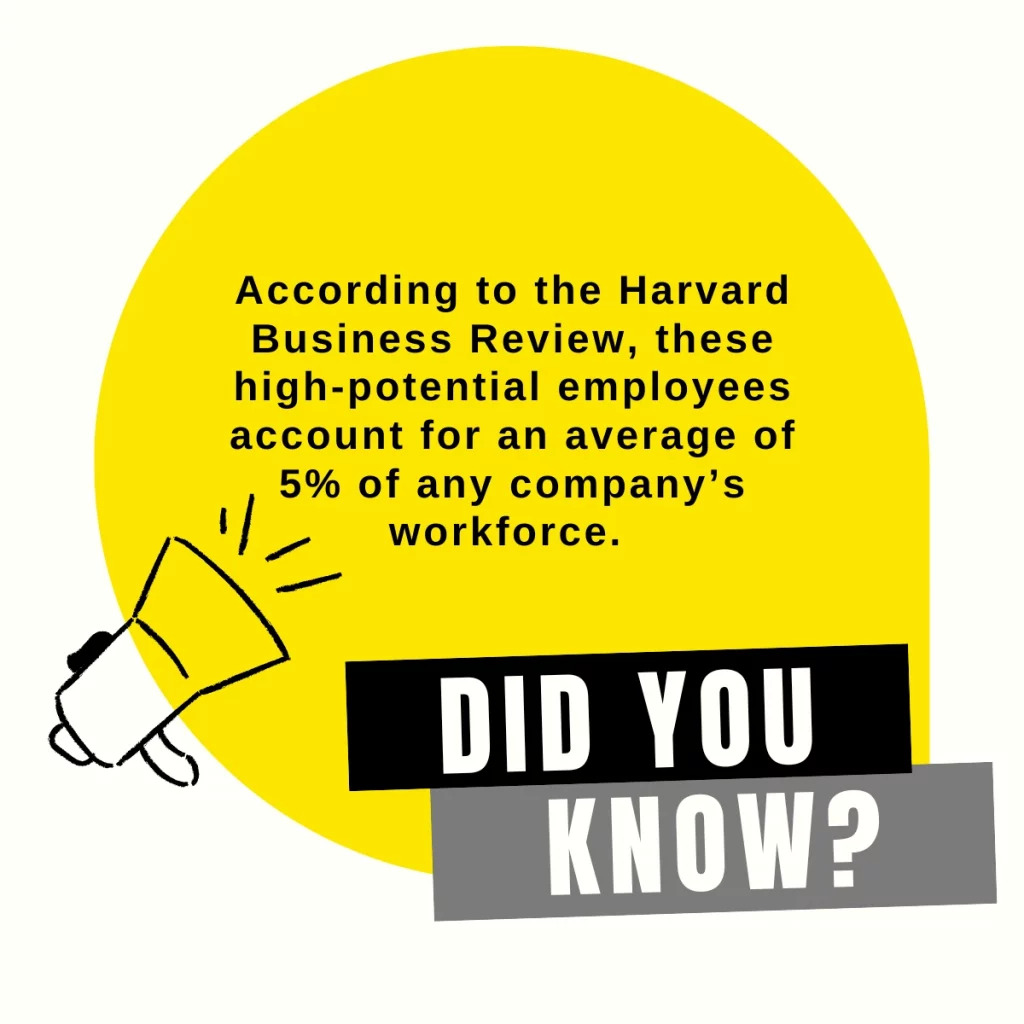High Potential Employees, or simply HiPos, are often called an organisation’s diamonds in the rough. This is because whilst high-performing employees are easy to spot, HiPos need to be searched for. But once discovered and taken care of correctly, brings high value to their organisation. HiPos are said to bring more than twice the ROI as average employees do. But, organisations often miss HiPos due to a lack of systems, frameworks, or tools. Here, we explore the differences between performers and potentials.
The Crucial Distinction: Performance vs. Potential
Organisations frequently invest heavily in systems, frameworks, and tools to identify HiPo employees. However, it’s common to confuse high performance with high potential. While HiPo employees often exhibit high performance, not all high performers possess high potential.
This distinction becomes clear when high performers struggle to deliver results after being promoted to management roles. High performers excel in their current roles, but HiPos bring more to the table. They are not only results-driven but also exhibit leadership qualities essential for long-term business success.
The Rarity and Value of HiPos
Identifying HiPos isn’t easy without the right mechanisms. According to the Harvard Business Review, high-potential employees make up only about 5% of a company’s workforce. Despite their scarcity, these employees can drive significant returns. This is where Pareto’s Principle, or the 80/20 rule, comes into play.

Pareto’s Indication of High Potentials
Often, organisations spend millions introducing systems, frameworks, or tools to help them in identifying a group of special employees known as the high potentials or simply HiPos. High potential and high performance can often be misidentified and this is because the two traits aren’t always mutually exclusive. While high-potential employees are usually high performers, the same isn’t always true of high-performance employees.
This becomes evident when high performers are moved into management roles and suddenly find it overwhelming to achieve results. High performers will always stand out, but high-potential employees have even more to offer than just great results. Those with high potential will not only be results-driven, but they will also possess an aptitude for leadership qualities necessary for business continuity.
Pareto’s Guideline and How This Relates to High Potential Employees
In 1906, Italian financial analyst Vilfredo Pareto made a scientific equation portraying the unequal conveyance of riches in his nation. Pareto noticed that 20% of the individuals possessed 80% of the riches. Within the late 1940s, fabricating quality master, Dr Joseph M. Juran, ascribed the ‘80/20 rule’ to Pareto, calling it Pareto’s Principle.
For a long time, Pareto’s Guideline has been recognised as a compelling commerce administration metric. Essentially, Pareto’s Guideline sets that in any set of things (specialists, clients, etc.), some (20%) are ‘vital’, and many (80%) are not. In Pareto’s case, he found that generally, 20% of the individuals in his nation were overwhelmed with 80% of the riches.
In Juran’s introductory work, he distinguished 20% of item surrenders, causing 80% of item issues. It is well known by extension directors that 20% of work (more often than not, the primary 10% and the final 10%) devours 80% of the time and assets.

This scientific study has long recommended that contributing to the right individuals will maximise organisations’ returns. In line with Pareto’s guideline, these ponders appear that over a wide run of errands, businesses, and organisations, a little extent of the workforce tends to run an expansive extent of organisational comes about, such that:
| PERCENTAGES OF INPUT | PERCENTAGES OF OUTPUT |
| 1% | 10% |
| 5% | 25% |
| 20% | 80% |
The table above shows that the
- top 1% accounts for 10% of organisational output
- top 5% accounts for 25%, of organisational output
- top 20% accounts for 80% of organisational output
Implementing a High Potential Program
Organisations seeking to leverage HiPos should:
- Develop Clear Criteria: Establish what qualities distinguish HiPos from high performers. This might include leadership potential, strategic thinking, and adaptability.
- Use Robust Assessment Tools: Employ tools and frameworks designed to identify these qualities accurately.
- Provide Targeted Development: Offer tailored development programs that prepare HiPos for future leadership roles.
- Monitor and Support: Continuously monitor the progress of HiPos and provide ongoing support to ensure their growth aligns with organisational goals.
In Conclusion
Looking at the above, we know why HiPos are often sought after and receive special attention from organisations. However, before pouring millions into a HiPo identification process, organisations need to start with the basic construct of differentiating between a high performer and a high potential. Organisations should not fall into the trap of excitedly promoting a high performer who may end up failing with heighten job responsibility and complexity, but rather, promote HiPo’s who are quick to embrace and adapt to bigger roles.
Want to know how to retain High Potential? Read here now.
Page Contents






